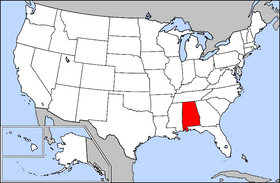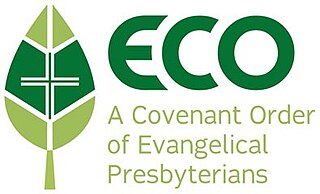
Scouting in Alabama has a long history, from the 1910s to the present day, serving thousands of youth in programs that suit the environment in which they live.

Trussville is a city in Jefferson and St. Clair counties in the State of Alabama. It is a suburb of Birmingham and part of the Birmingham-Hoover Metropolitan Statistical Area. Its population at the 2020 census was 26,123.

The Presbyterian Church in America (PCA) is the second-largest Presbyterian church body, behind the Presbyterian Church (USA), and the largest conservative Calvinist denomination in the United States. The PCA is Reformed in theology and presbyterian in government.

The Cumberland Presbyterian Church is a Presbyterian denomination spawned by the Second Great Awakening. In 2019, it had 65,087 members and 673 congregations, of which 51 were located outside of the United States. The word Cumberland comes from the Cumberland River valley where the church was founded.

The Presbyterian Church in the United States was a Protestant denomination in the Southern and border states of the United States that existed from 1861 to 1983. That year, it merged with the United Presbyterian Church in the United States of America (UPCUSA) to form the Presbyterian Church (USA).

The Cahaba River is the longest substantially free-flowing river in Alabama. It is a major tributary of the Alabama River and part of the larger Mobile River basin. With headwaters near Birmingham, the Cahaba flows southwest, then at Heiberger turns southeast and joins the Alabama River at the ghost town and former Alabama capital of Cahaba in Dallas County. Entirely within central Alabama, the Cahaba River is 194 miles (312 km) long and drains an area of 1,870 square miles (4,800 km2). The name Cahaba is derived from the Choctaw words oka meaning "water" and aba meaning "above"

Central Alabama is a region in the state of Alabama. It is sometimes considered part of North Alabama because both regions are mountainous, but in some definitions they are different regions.

The Bible Presbyterian Church is an American Protestant denomination in the Reformed tradition. It was founded by members of the Orthodox Presbyterian Church over differences on eschatology and abstinence, after having left the Presbyterian Church in the United States of America over the rise of modernism.

The Alabama High School Athletic Association (AHSAA), based in Montgomery, is the governing body for interscholastic athletics and activities programs for public schools in Alabama.
The Alabama Independent School Association is an organization of private schools in Alabama, formed in 1966 as the Alabama Private School Association. Originally a group of eight segregation academies, the membership grew to 60 by the 1971–72 school year. In 1990, the group voted to change its name to the Alabama Independent School Association. In 2008, an all-black school, Restoration Academy joined the AISA with no serious incidents. Today, the AISA serves 70 member schools. Most member schools are located in the state of Alabama, but one member school is located in Meridian, MS and one affiliate member is located in Smyrna, TN

The Birmingham metropolitan area, sometimes known as Greater Birmingham, is a metropolitan area in north central Alabama centered on Birmingham, Alabama, United States.

ECO: A Covenant Order of Evangelical Presbyterians is an evangelical Presbyterian denomination in the United States. As a Presbyterian church, ECO adheres to Reformed theology and Presbyterian polity. It was established in 2012 by former congregations and members of the Presbyterian Church (USA), abbreviated PC(USA). Denominational disputes over theology—particularly ordination of practicing homosexuals as pastors and gay marriage—and bureaucracy led to the founding of ECO. In 2018, ECO has over 383 congregations, 103,425 covenant partners and over 500 pastors. ECO churches are egalitarian in beliefs and ordain women as pastors and elders.

First Presbyterian Church is an historic church at 2100 4th Avenue, North in Birmingham, Alabama. It was built in 1888 and added to the National Register of Historic Places in 1982. It is a member of the Presbytery of Sheppards & Lapsley.

The Alabama Black Belt National Heritage Area is a National Heritage Area encompassing Bibb, Bullock, Butler, Choctaw, Clarke, Conecuh, Dallas, Greene, Hale, Lowndes, Macon, Marengo, Monroe, Montgomery, Perry, Pickens, Sumter, Washington, and Wilcox counties in the Black Belt region of Alabama. The Center for the Study of the Black Belt at the University of West Alabama serves as the local coordinating authority.












